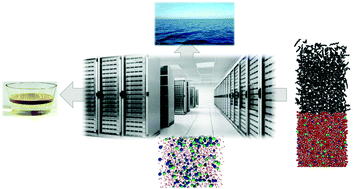This review presents the state of the art in molecular simulations of interfacial systems and of the calculation of the surface tension from the underlying intermolecular potential. We provide a short account of different methodological factors (size-effects, truncation procedures, long-range corrections and potential models) that can affect the results of the simulations. Accurate calculations are presented for the calculation of the surface tension as a function of the temperature, pressure and composition by considering the planar gas–liquid interface of a range of molecular fluids. In particular, we consider the challenging problems of reproducing the interfacial tension of salt solutions as a function of the salt molality; the simulations of spherical interfaces including the calculation of the sign and size of the Tolman length for a spherical droplet; the use of coarse-grained models in the calculation of the interfacial tension of liquid–liquid surfaces and the mesoscopic simulations of oil–water–surfactant interfacial systems.
